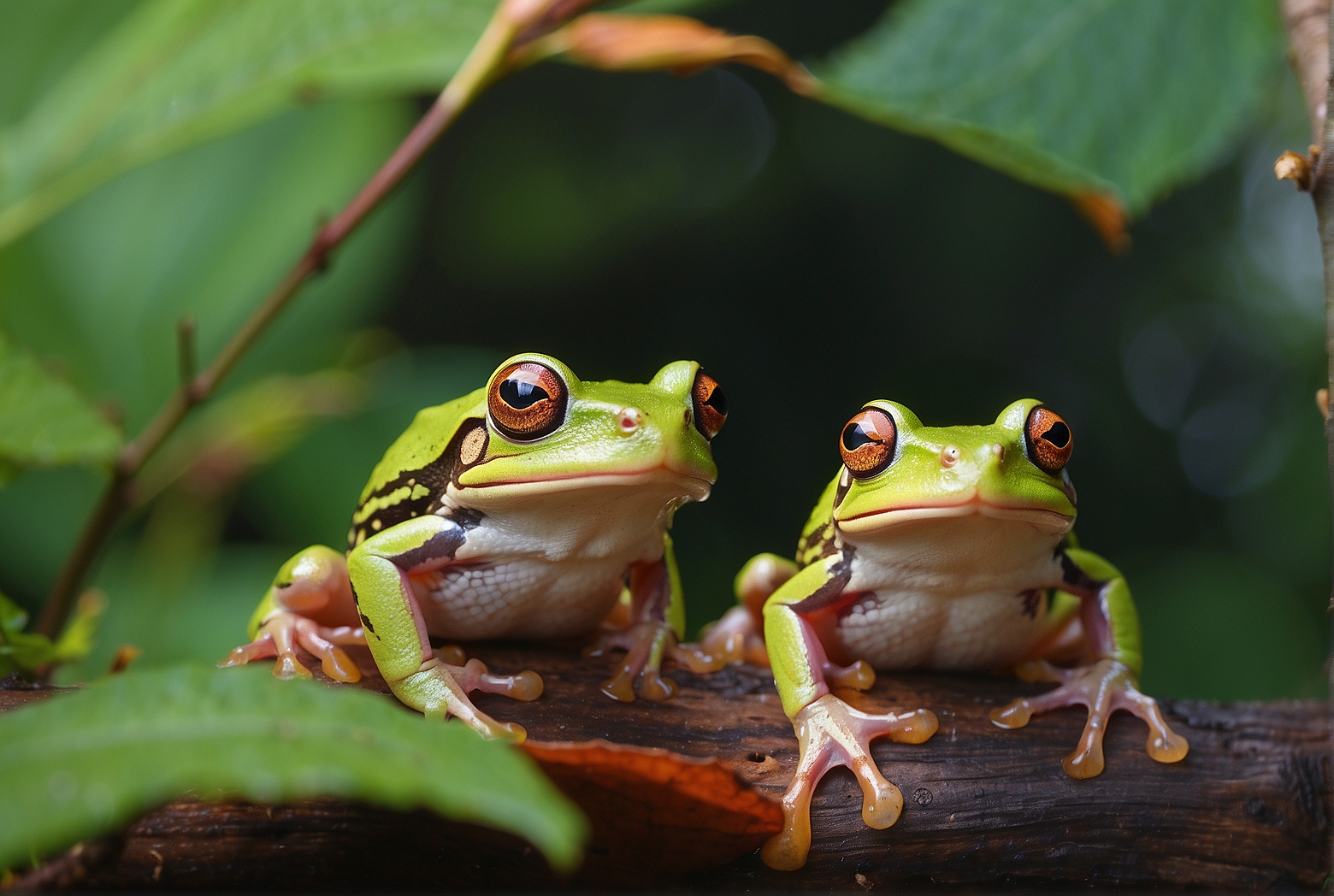In the enchanting realm of amphibians, tree frogs have captivated scientists with their unique reproductive habits. Delving into their fascinating world, we embark on a quest to answer the age-old question: Where do tree frogs lay their eggs? As we step into their lush habitats, we discover the surprising places these tiny creatures choose to house their precious offspring. From towering trees to shimmering ponds, join us as we explore the hidden wonders of tree frog reproduction and uncover the secrets of their remarkable survival strategy.
Introduction to Tree Frogs
Tree frogs are fascinating amphibians known for their unique reproductive habits. In this article, we will explore the basic characteristics of tree frogs and discuss the importance of studying their reproductive behaviors.
Tree Frog Reproduction Overview
Amphibians, including tree frogs, employ a variety of reproductive strategies. These strategies may vary depending on the species and their specific environment. Tree frogs, in particular, have some distinctive aspects to their reproduction that set them apart from other amphibians. Understanding these behaviors is crucial for ensuring the survival of these remarkable creatures.
Habitats for Tree Frog Egg Laying
Tree frogs typically prefer to lay their eggs in water bodies such as ponds, lakes, or slow-moving streams. These habitats provide the optimal conditions for egg development and survival. However, tree frogs have also adapted to lay their eggs in a wide range of suitable environments, including temporary pools, tree holes, leaf axils, and even water-filled tree cavities.
Aquatic Egg Deposition in Tree Frogs
When selecting suitable breeding sites, tree frogs exhibit specific behavioral adaptations. They often choose water bodies that lack predatory fish and provide ample food resources. Female tree frogs deposit their eggs in clusters or masses, attaching them to vegetation or other structures near the water’s edge. This attachment is essential for protecting the eggs from turbulent movements or being dispersed away from suitable hatching conditions. Factors such as temperature, oxygen levels, and water quality play significant roles in the survival of tree frog eggs.
Terrestrial Egg Deposition in Tree Frogs
While most tree frogs prefer aquatic environments for egg laying, some species have evolved the unique ability to deposit their eggs on land. These terrestrial egg-laying tree frogs select appropriate locations such as moist leaf litter, tree cavities, or underground burrows. This adaptation provides protection against predators commonly found in water bodies and allows the eggs to develop without the need for aquatic conditions. However, terrestrial egg deposition also presents potential risks due to exposure to drying out or being damaged by other environmental factors.
Egg-Laying Techniques and Adaptations
Tree frogs display remarkable diversity in clutch sizes and timing. Some species produce small clutches of eggs multiple times throughout the breeding season, while others lay larger clutches in a single reproductive event. To ensure the survival of their offspring, female tree frogs use various methods to attach their eggs to substrates effectively. These can include adhesive secretions, wrapping them around vegetation, or even embedding them in foam nests. Some tree frog species have also evolved unique adaptations, such as waterproof coatings on their eggs, to protect them from predators and environmental challenges.
Parental Care and Nest Guarding
While most amphibians provide little to no parental care, some tree frog species exhibit remarkable nest-guarding behaviors. In these species, both males and females play essential roles in protecting the eggs and ensuring their survival. Male tree frogs guard the nests, often for extended periods, and keep vigilant watch against potential threats. Female tree frogs may return periodically to check on the eggs or provide additional protection. This parental care significantly increases the chances of egg survival by deterring predators and maintaining suitable conditions for development.
Development and Hatching of Tree Frog Eggs
The incubation period of tree frog eggs can vary depending on environmental factors such as temperature and moisture levels. Proper moisture levels are essential for successful embryo development, as they facilitate the exchange of gases through the egg’s permeable shell. As the embryos develop, they go through different stages, with organs and body structures gradually forming. These stages mark significant milestones in the growth of the tree frog embryo, ultimately leading to hatching.
Challenges Faced by Tree Frog Eggs
Tree frog eggs face numerous challenges during their development. Predatory threats, including insects, spiders, and other amphibians, can significantly impact egg survival rates. Additionally, environmental hazards such as drought, flooding, and pollution pose risks to both terrestrial and aquatic tree frog eggs. Human activities, including habitat destruction and the introduction of invasive species, also have severe implications for the survival of tree frog eggs. Protecting these eggs is crucial for maintaining healthy tree frog populations and preserving biodiversity.
Conclusion
In conclusion, tree frogs have intricate and unique reproductive habits that are both fascinating and delicate. Understanding these behaviors is vital for providing proper conservation measures and ensuring the survival of these remarkable creatures. Further research into tree frog reproductive habits is necessary to develop effective strategies for protecting their eggs and preserving their habitats. By studying tree frog reproduction, we can contribute to the conservation of these incredible amphibians and the ecosystems they inhabit.
